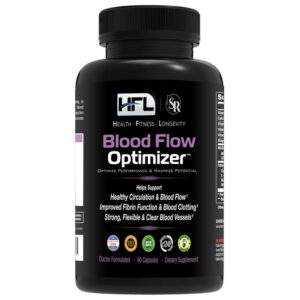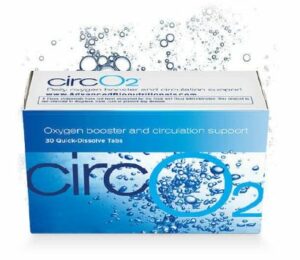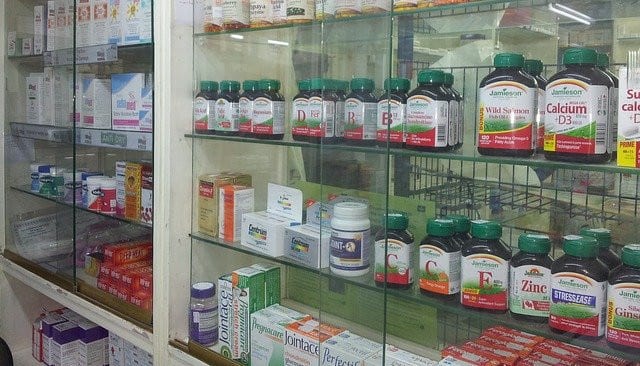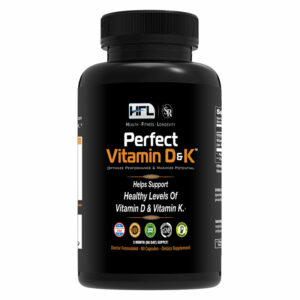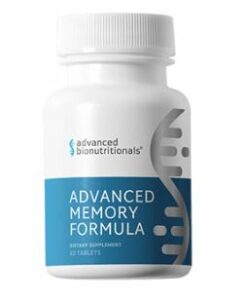Can calcification of the arteries be reversed?
If calcification of the arteries is the main cause of the cardiovascular disease can calcification of the arteries be reversed and turn the lives of so many people that suffer from CVD around for the better, let’s take a closer look at what calcification of the arteries means.
What is the number one cause of death worldwide?
Globally, the number one cause of death is Cardiovascular Disease (CVD). This disease is influenced predominantly by genetics, yet behavioral and lifestyle factors can be vital contributors to its development.
With an estimated 17.3 million dying from CVD each year, representing 31.5% of all global deaths – when categorized, it is estimated that 7.4 million of these deaths are due to Coronary Heart Disease and a further 6.7 million due to strokes, thus emphasizing the growing issue of heart conditions.
This global leading cause of death constitutes an average of 47% of all deaths in Europe and is the leading cause of premature death for both sexes in a majority of countries across the globe.
Often the risk of CVD can be decreased through a healthy and balanced diet that incorporates physical activity and moderates or entirely avoids vices such as smoking or alcohol consumption.
What are the effects on families?
CVD contributes to immense individual hardship due to the strains it placed on the patient’s family – yet it can also contribute to economic hardship. With an estimation of a 200 billion cost to the EU per annum – CVD is an unstoppable force that wreaks havoc.
Yet this havoc is exponentially influencing America, with a forecasted average yearly cost expected to rise to $818 billion across the next ten years. This is a tripled value of the baseline surveillance conducted in 2010.
Yet this is a result of the aging population within the US, leading evaluative organizations to suggest that in 2030, nearly 4% of adults will experience a stroke during their life.
With a daunting future lying ahead, is there a constructive solution to this continually worsening issue or is it the main cauof se calcification of the arteries? In other words, can the calcification of the arteries be reversed?
The Wonders Of Calcium
The essential nutrient, calcium, is a vital contributor to the maintenance of bone health and muscle contraction, adequate nerve signaling, and other crucial metabolic functions.
Calcium is also supported by Vitamin D3 which acts as an assistor by helping to increase the absorption of calcium into the intestine and bloodstream, where the vitamin can then be put to productive use by the organs.
Often these organs delegate calcium to regions such as the bones, due to these areas requiring the most calcium use in the body so that it can productively strengthen and form bones.
Additionally, calcium provides bone strength and structure and helps the formation of buildings and ocean reefs; for example, the limestone structure of the pyramids of Giza has withstood thousands of years of potential erosion and external forces. Calcium is a force to be reckoned with.
However, what happens when the body gets too much calcium? Or when calcium isn’t correctly used by the body?
What if there is a calcium imbalance?
The Downsides of Calcium
If there is a surplus of calcium, derived from food or supplementation, this can be detrimental to health.
Soft bodily tissues, such as arteries and vessels within the circulatory system, are at risk of absorbing excess calcium which is then redistributed amongst the majority of the circulatory system – this is called tissue calcification.
This is a prime example of the misuse of calcium, yet examples such as kidney stones and skin calluses also represent the improper delegation of calcium leading to skin and tissues calcifying.
Through studies, there have also been correlations between patients experiencing calcified pineal glands and Alzheimer’s once compared to controls – suggesting that calcification is a process that can cause far greater issues than previously anticipated.
Due to calcification, these arteries and vessels become more inflexible and stiff through a process called arteriosclerosis, which is the calcification of vessel and artery walls.
This means that their ability to outwardly expand and contract to deliver increased blood flow and provide oxygen across the body during physical activity becomes strained and inefficient. 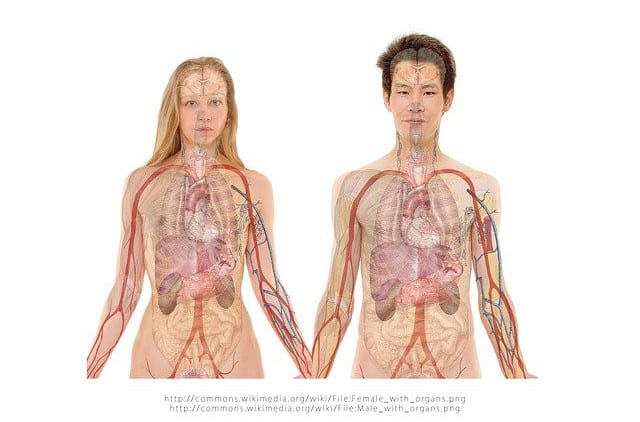
The heart has to work harder
As a result, the heart has to work harder to pump higher volumes of blood through a partially blocked circulatory system, if you have a blocked circulatory system the risks of a heart attack are much higher, so can the calcification of the arteries be reversed?
As arteriosclerosis occurs, plaque begins to line the inner walls of both arteries and vessels. Plaque is a build-up of both the excess production and poor distribution of calcium and lipids.
As plaque increases, elasticity decreases, and further stress is imposed on the heart due to the buildup decreasing the diameter of the vessels so that the blood passage is more limited – therefore, the heart has to work harder to pump blood through smaller vessel openings.
As a result, this increases the likelihood of heart attacks and strokes, which is due to the potential for the bloodstream to dislodge plaque build-ups before transporting them further along in the artery or vessel.
This then can cause huge amounts of blockage and can present a growing health concern.
Calcification and CVD
With calcification as a precursor to CVD, this emphasizes that as plaque increases due to this process, this can contribute to the progressive worsening of health.
Calcification in its early stages is present in over 30% of the over-45 population – yet similar to many conditions, calcification increases with age, leading arterial stiffness to become a growing risk amongst an aging population.
Early-onset CVD is often an extremity, yet as people age, the circulatory system grows less efficient due to a small degree of calcification. As calcification worsens, the cardiovascular system begins to diminish further and reach a state of debilitation – leading to conditions such as CVD.
It is often determinable when cardiovascular performance is diminishing due to the lack of energy and poor stamina often displayed by those suffering from this – however, it is important to note that these can be symptoms experienced several years before the development of CVD.
Benefits of Supplementation for calcification of the arteries
It is a regular question can the calcification of the arteries be reversed, I believe that Vitamin K2 MK-7, or more simply Vitamin K2, is a daily supplement that can be ingested to act as a preventative to arterial calcification.
This vitamin has correlations with the reversal of pre-existing calcification as it helps restore flexibility and elasticity within the affected vessels and arteries.
Vitamin K2 is a crucial regulator of calcium and can have immense benefits on your health including the answer to can calcification of the arteries be reversed.
Vitamin K2 is also a catalyst for the activation of osteocalcin proteins, which is a protein produced by osteoblast cells located in the bones.
During the activation of osteocalcin proteins, they begin to travel through the bloodstream and bind to free-floating calcium before transporting this back to the bones ready for integration into the bone matrix.
As the calcium is integrated, it can then be used for bone strengthening and building as opposed to calcifying soft tissues.
Unbound calcium within the bloodstream isn’t used for any other metabolic processes besides bone formation, meaning it has to be excreted for the least impact on your health – or it can be deposited in soft tissues where it begins to form plaque.
How much Vitamin K2 for calcification of the arteries to be reversed
However, a daily dose of K2 of 75–120 µg (the range is present due to different recommendations across the globe) as a supplementation value between this range will help contribute to optimal osteocalcin activation.
Yet, there have also been studies that emphasize that a daily dose of 375 µg Vitamin K2 can prompt maximal efficiency in terms of osteocalcin activation – thus leading to optimal calcium use within the body and the answer to can calcification of the arteries being reversed.
The benefits of Vitamin K2 calcification of the arteries
The benefits of K2 don’t stop there, however. Vitamin K2 can also activate a second enzyme, Matrix Gla Protein (MGP), which targets the heart specifically by protecting it from the unhealthy impacts of calcium. MGP binds to calcium to inhibit it from accessing the cardiovascular system.
The benefits of Vitamin K2, and the subsequent benefits of MGP, to prevent arterial calcification and the answer to can calcification of the arteries be reversed, have been extensively documented throughout the medical literature.
There have been an array of studies conducted throughout recent years that have established the correlation between a lower intake of Vitamin K2 and a smaller likelihood of survival amongst cardiovascular patients.
Similar studies have also demonstrated that supplementation of a dose of 90 µg of Vitamin K2 decreases levels of non-activated MGP – which represents how supplementation is creating an effective channel for treating early-onset CVD.
Supplementation is offering the chance to tackle symptoms from acute development.
What are the Dangers of Calcium Deposits in Arteries?
As excessive amounts of calcium develop within the blood or combine with cholesterol and lipids, which can have devastating repercussions on the quality of health.
The combination of the two attributes to plaque development can begin to build a layer of excess material on the inside of artery walls, thus narrowing the pathways for blood to pump through.
This can cause either total or partial blockage and can increase the strain on the heart.
In medical literature, this mixture causing plaque build-ups is referred to as atherosclerosis – which is a risk factor of CVD, whilst also contributing to the risk of heart attacks and strokes.
What Causes Calcium Deposits in Arteries?
Researchers have been unable to ascertain the primary cause for calcium deposits within the arteries – yet they have concluded upon contributing factors.
The chronic arterial wall damage caused by atherosclerosis is contributed to by a series of factors – some of these beings:
- Smoking: Excess Body Fat.
- High Cholesterol:
- High Blood Glucose.
- Chronic Drinking.
Symptoms of Calcium Deposits in Arteries
With calcium deposits in the arteries endangering the health of patients, disruption of blood flow, and additional strain on the heart, there is a range of physical symptoms that manifest themselves in recognizable ways.
Yet these symptoms are dependent on how much of the artery is blocked.
In cases where the coronary artery is blocked, individuals may experience chest pain with every minute exertion and may also display: shortness of breath, heaviness in the chest, and an extreme heartbeat (either extremely slow or rapid).
When the blockage is in the arteries that transport blood to the brain, individuals may experience symptoms often resemble that of a stroke with individuals displaying: dizziness, slurred speech, memory loss, weakness in both the hands and legs, sudden and severe headaches, and difficulty maintaining balance.
Yet if the deposits are impacting the peripheral arteries of the arms, legs, or pelvis, the individual may experience numbness in the concerned area, incessant tingling sensations, muscle pain, or spasms.
If you suffer from any of these symptoms please take the time to read
How to Reduce Calcium Deposits in Arteries Naturally
If the above information has instilled fear, there are several productive ways to reduce calcium deposits and plaque, which bear resemblance to treatment methods for atherosclerosis.
Below are some proactive changes that can be made to prevent the possibility of both calcium build-ups and CVD.
- Ceasing Smoking: This may prevent further damage to the internal lining of arteries and the associated complications.
- Balanced Diet: Ensure your diet is healthy, and balanced, and incorporates all the necessary vitamins and minerals.
- Exercise: This can decrease calcium buildups and cholesterol within your arteries, whilst also minimizing body fat so that it cannot linger in the flood and contribute to plaque development.
- Reduced Sodium Intake: Sodium is the primary cause of hypertension, which damages the arterial wall by weakening them, thus making them more susceptible to calcium build-ups.
- More Green Vegetables: Include more green vegetables in your diet as they are rich in vitamin K2, amongst other minerals such as iron, which are beneficial in reducing calcium blockages and contributing to the quality of your overall health.
- Increase your intake of Vitamin K2: It’s been proven in so many scientific articles that by supplementing with a quality Vitamin K2 product you can reverse calcification of the arteries.
References
https://www.s891hjtrk.com/88CX5K/55M6S/?rotate_uid=1
https://www.ncbi.nlm.nih.gov/pmc/articles/PMC7071387/
https://openheart.bmj.com/content/2/1/e000300
https://www.s891hjtrk.com/22G135W/3QQG7/?uid=11
Related article:
Search
Categories
- Adrenal fatigue
- Aging
- Beauty Products
- Beauty Products
- Bladder Health
- Blocked fallopian tubes
- Blood Flow
- Bones
- Calcification of the arteries
- Carpal Tunnel Syndrome
- Cholesterol
- Circulation
- CLE Holistic
- Copd Emphysema
- Diabetes
- Endometriosis natural treatment
- Erectile dysfunction
- Eye health
- FAQ
- Female health
- Gout
- Gut Health
- Hair loss
- Heart disease
- Heartburn
- High Blood Pressure
- Hip Bursitis
- Hip leg pain
- Ice Barrel
- Immune system
- Indigestion
- Inflammatory Diseases
- Liver Function
- Medical questions answered by a Doctor
- Memory
- Mental health
- Migraines
- Mitochondrial
- Muscle loss in old age
- Nerve Vitamins
- Numbness tingling
- Peyronies disease
- Posts
- Premature ejaculation
- Probiotics
- Prostate
- Scar Tissue
- Sexual Health
- Sinus Infection
- Sleep disorders
- Stress
- Supplements reviews
- TESTIMONIALS
- Testosterone
- Trace minerals
- Vitamins
- Weight loss supplements
Newsletter
Sign up and stay informed
Synergy Hearth & Health
Thank you!
You have successfully joined our subscriber list.


